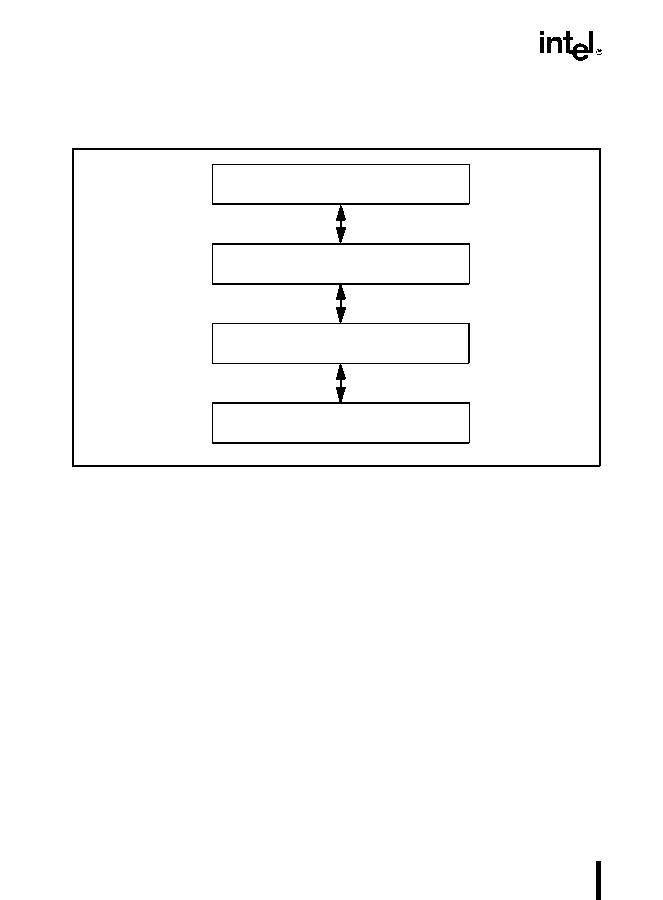F-6
GUIDELINES FOR WRITING SIMD FLOATING-POINT EXCEPTION
A diagram of the control flow in handling an unmasked floating-point exception is presented
below.
From the user level floating-point filter, Example F-2 in Section F.4.3., SIMD Floating-Point
Emulation Implementation Examplewill present only the floating-point emulation part. In or-
der to understand the actions involved, the expected response to exceptions has to be known for
all the Streaming SIMD Extensions numeric instructions in two situations: with exceptions en-
abled (unmasked result), and with exceptions disabled (masked result). The latter can be found
in Section 4.4., Interrupts and Exceptions, in Chapter 4, Procedure Calls, Interrupts, and Ex-
ceptions. The response to NaN operands that do not raise an exception is specified in Section
9.1.6., SIMD Floating-Point Register Data Formats. Operating on NaNs from the same
source. It is also given in more detail in the next subsection, along with the unmasked and
masked responses to floating-point exceptions.
F.4.2.Streaming SIMD Extensions Response To Floating-Point
Exceptions
This subsection specifies the unmasked response expected from the Streaming SIMD Exten-
sions instructions that raise floating-point exceptions. The masked response is given in parallel,
as it is necessary in the emulation process of the instructions that raise unmasked floating-point
exceptions. The response to NaN operands is also included in more detail than in Section 9.1.6.,
SIMD Floating-Point Register Data Formats. For floating-point exception priority, refer to
Figure F-1. Control Flow for Handling Unmasked Floating-Point Exceptions
User Application
User Level Floating-Point Exception Filter
Low-Level Floating-Point Exception Handler
User Floating-Point Exception Handler

